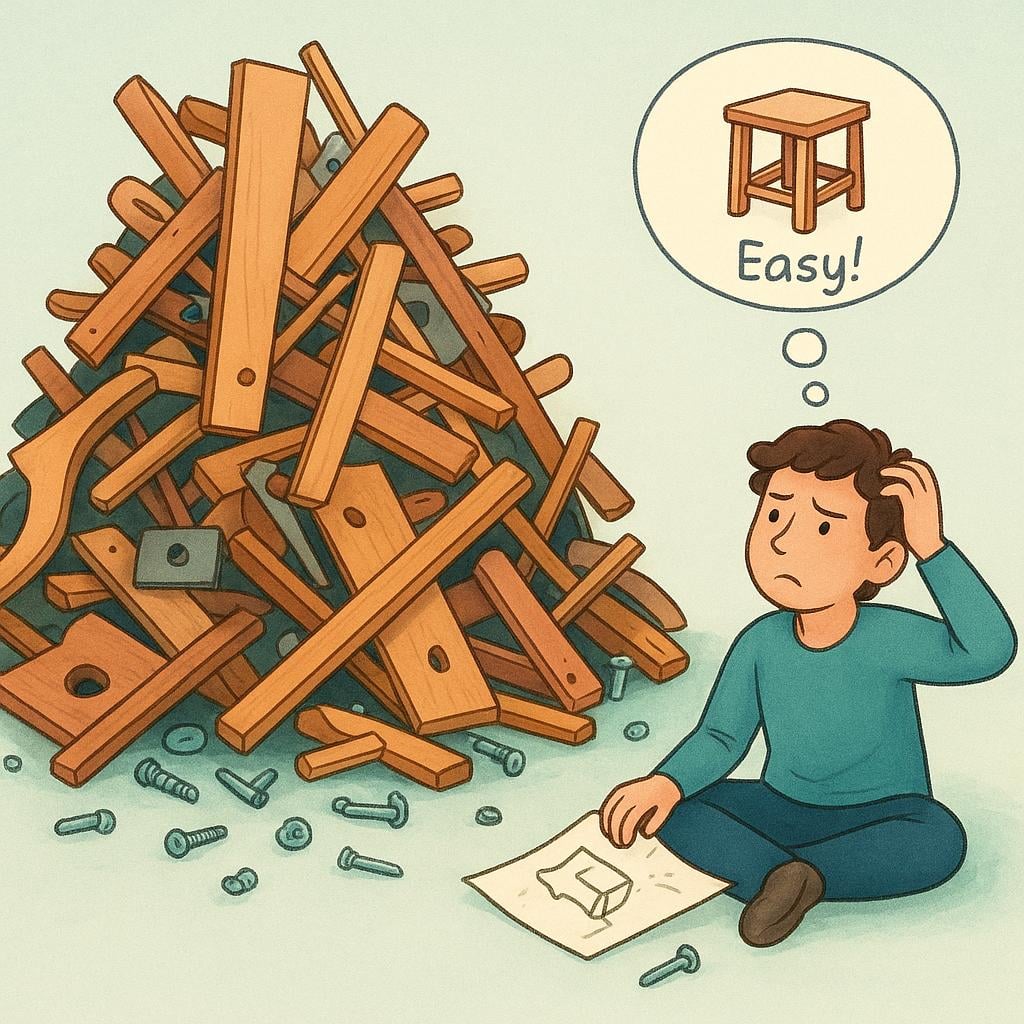parecía
/pa-re-SEE-a/
seemed

Use parecía (seemed/looked) to describe how someone or something appeared in the past, like how the boy seemed tired after playing.
parecía(Verb)
seemed
?General appearance or impression
,looked
?Visual appearance
appeared
?How something presented itself
,felt
?Describing an atmosphere or texture, e.g., 'the air felt cold'
📝 In Action
El niño parecía cansado después de jugar todo el día.
A2The boy seemed tired after playing all day.
La casa parecía más grande por dentro.
A2The house seemed bigger on the inside.
Todo parecía estar en orden cuando llegamos.
B1Everything appeared to be in order when we arrived.
💡 Grammar Points
Describing the Past with 'Parecía'
Use 'parecía' to describe how something seemed, looked, or felt over a period of time in the past. It sets the scene, like painting a picture with words, without focusing on a specific start or end time.
❌ Common Pitfalls
'Parecía' vs. 'Pareció'
Mistake: "Cuando lo vi, de repente parecía enfermo."
Correction: Cuando lo vi, de repente pareció enfermo. (When I saw him, he suddenly looked sick.) Use 'pareció' for a sudden impression or a change you noticed at a specific moment. Use 'parecía' for an ongoing state.
⭐ Usage Tips
Setting the Scene
'Parecía' is perfect for starting a story. For example: 'Era una noche oscura y la calle parecía desierta.' (It was a dark night and the street seemed deserted.)

When combined with pronouns (like Me parecía), this form means 'I thought' or 'it seemed to me,' expressing a past personal opinion or subjective impression.
parecía(Verb)
it seemed (to someone)
?Expressing a personal impression
I/you/he/she thought
?A common, less direct way to say what someone thought
📝 In Action
Me parecía que la película era un poco lenta.
B1It seemed to me that the movie was a bit slow. (or: I thought the movie was a bit slow.)
¿No te parecía una mala idea en ese momento?
B1Didn't it seem like a bad idea to you at that moment?
Al principio, nos parecía que el proyecto iba a ser muy fácil.
B2At first, we thought the project was going to be very easy.
💡 Grammar Points
Expressing Opinions with 'me, te, le...'
To say what someone thought, you must add a little word before 'parecía' to show who had the opinion. 'Me parecía' is 'I thought,' 'te parecía' is 'you thought,' 'le parecía' is 'he/she thought.'
❌ Common Pitfalls
Forgetting the 'Who'
Mistake: "Parecía que la idea era buena."
Correction: Me parecía que la idea era buena. The first sentence just means 'The idea seemed good' in a general way. To say it was *your* opinion, you need 'me'.
⭐ Usage Tips
Sounding Less Direct
Saying 'Me parecía que...' is often a softer, more polite way of sharing a past opinion than saying 'Yo creía que...' (I believed that...). It acknowledges that it was just your impression.
🔄 Conjugations
indicative
present
preterite
imperfect
subjunctive
present
imperfect
✏️ Quick Practice
💡 Quick Quiz: parecía
Question 1 of 2
Which sentence best translates to 'I thought the plan was risky'?
📚 More Resources
Frequently Asked Questions
What's the difference between 'parecía' and 'se veía'?
They are very similar! 'Parecía' is about a general impression or feeling ('he seemed sad'). 'Se veía' is more focused on visual appearance ('he looked sad'). Often, you can use them interchangeably, but 'se veía' always implies you could see it with your eyes.
Can 'parecía' be used for 'I' and 'he/she'?
Yes, and that can be tricky! 'Yo parecía cansado' means 'I seemed tired.' 'Él parecía cansado' means 'He seemed tired.' The form is the same. You know who is being talked about from the context or by including the person's name or pronoun ('yo', 'él', 'ella', 'usted').